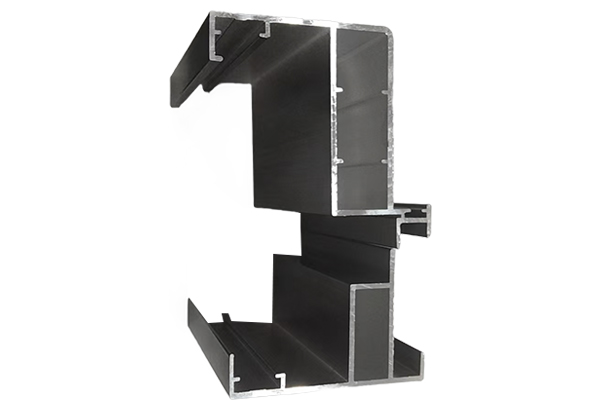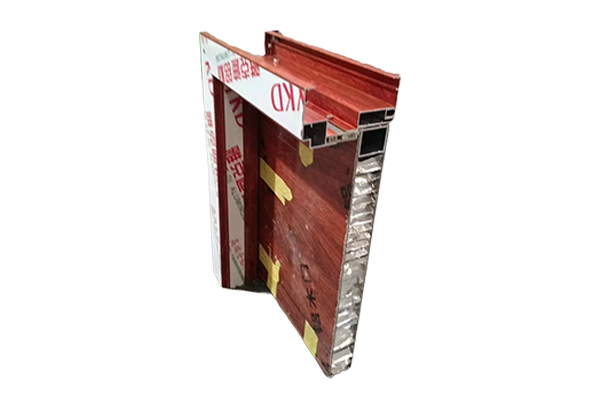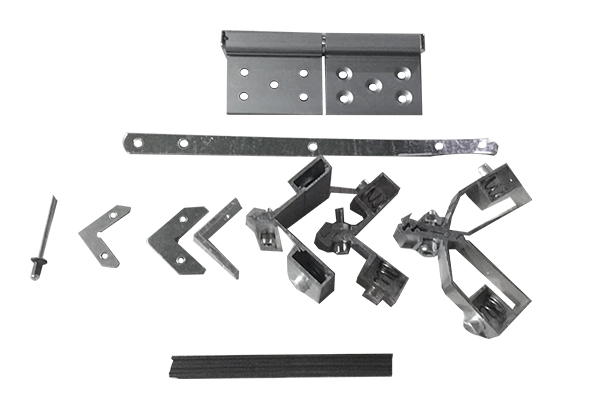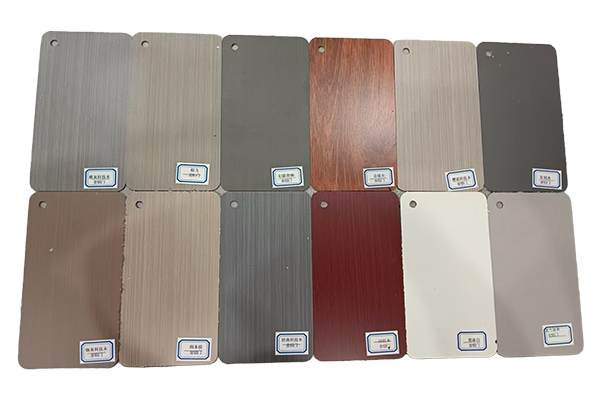Does the surface coating of the honeycomb door panel use solvent-free or water-based paint technology to ensure that the indoor air quality meets the standard?
Release Time : 2025-04-05
In modern homes and commercial spaces, indoor air quality has become an important indicator for measuring health and environmental protection. As a high-end door product, the surface coating process of the honeycomb door panel is not only related to beauty and durability, but also directly affects the health of the indoor environment. Honeycomb door panels that use solvent-free or water-based paint technology are building a safety line for indoor air quality through technological innovation.
Traditional solvent-based paints release a large amount of volatile organic compounds (VOCs) during the painting process, such as formaldehyde and benzene. Long-term exposure to these substances may cause respiratory diseases, allergic reactions and even cancer risks. If the honeycomb door panel uses solvent-free or water-based paint technology, it can reduce the release of harmful substances from the source. Solvent-free paints are based on high-solid resins and contain almost no volatile solvents. The VOCs emissions after painting are close to zero; water-based paints use water as a diluent, and the VOCs content is reduced by more than 80% compared with traditional paints. For example, the water-based polyurethane coating used in a certain brand of honeycomb door panel was tested to have a VOCs emission of only 15g/L, which is far lower than the national standard of 100g/L, ensuring that the indoor air quality meets the GB/T 18883-2022 "Indoor Air Quality Standard".
In addition to the low VOCs characteristics, solvent-free and water-based paint processes have taken a step further in environmental performance. Solvent-free coatings do not require high-temperature baking during curing, and energy consumption is reduced by 40% compared with traditional processes. There is no need to use diluents, which avoids the pollution of the atmospheric environment by solvent volatilization. Water-based paints can replace some petroleum-based ingredients with bio-based raw materials. For example, water-based acrylic resin modified with vegetable oil has a carbon footprint that is 30% lower than traditional paints. This green manufacturing concept is highly consistent with the goal of a circular economy, and is particularly suitable for projects with strict environmental requirements, such as LEED-certified buildings or children's activity spaces.
In terms of performance, solvent-free and water-based paint processes have not compromised on environmental protection needs. The dense molecular structure of the solvent-free coating makes it have excellent chemical corrosion resistance, can resist the erosion of daily chemicals such as detergents and disinfectants, and extend the service life of the door panel. Water-based paint uses nano-level pigment dispersion technology to achieve a gloss uniformity of more than 95%, avoiding common defects such as sagging and orange peel in traditional paints. The water-based fluorocarbon coated honeycomb door panel used in a high-end hotel project still maintains more than 90% of its original gloss after 3 years of use, and there is no coating peeling or discoloration.
From the perspective of construction convenience, solvent-free and water-based paint processes have the same advantages. Solvent-free coatings can achieve one-time thick coating, and the thickness of a single coating can reach 80μm, which reduces the number of coatings by 30% compared with traditional processes. Water-based paint supports room temperature drying, does not require professional baking equipment, and improves construction efficiency by more than 50%. This high efficiency not only shortens the construction period, but also reduces dust and noise pollution during construction, creating a cleaner working environment for the installation site.
As consumers continue to pay more attention to healthy living environments, solvent-free and water-based paint processes have become the technical standard in the honeycomb door panel industry. Some leading companies have even introduced intelligent coating systems to achieve precise control of paint usage and zero waste emissions. For example, the AI spraying robot used by a certain company can increase the paint utilization rate to 98%, reducing waste by 15% compared to manual spraying. This technological innovation not only consolidates the environmental advantages of the product, but also promotes the transformation of the entire door industry to green manufacturing.
In the context of increasingly stringent environmental regulations, the choice of solvent-free or water-based paint technology for honeycomb door panels is not only a choice of technological upgrade, but also a practice of social responsibility. From raw material selection to production process, from performance to construction efficiency, this process innovation is redefining the quality standards of high-end doors, creating a beautiful, durable, healthy and worry-free indoor space for users.
Traditional solvent-based paints release a large amount of volatile organic compounds (VOCs) during the painting process, such as formaldehyde and benzene. Long-term exposure to these substances may cause respiratory diseases, allergic reactions and even cancer risks. If the honeycomb door panel uses solvent-free or water-based paint technology, it can reduce the release of harmful substances from the source. Solvent-free paints are based on high-solid resins and contain almost no volatile solvents. The VOCs emissions after painting are close to zero; water-based paints use water as a diluent, and the VOCs content is reduced by more than 80% compared with traditional paints. For example, the water-based polyurethane coating used in a certain brand of honeycomb door panel was tested to have a VOCs emission of only 15g/L, which is far lower than the national standard of 100g/L, ensuring that the indoor air quality meets the GB/T 18883-2022 "Indoor Air Quality Standard".
In addition to the low VOCs characteristics, solvent-free and water-based paint processes have taken a step further in environmental performance. Solvent-free coatings do not require high-temperature baking during curing, and energy consumption is reduced by 40% compared with traditional processes. There is no need to use diluents, which avoids the pollution of the atmospheric environment by solvent volatilization. Water-based paints can replace some petroleum-based ingredients with bio-based raw materials. For example, water-based acrylic resin modified with vegetable oil has a carbon footprint that is 30% lower than traditional paints. This green manufacturing concept is highly consistent with the goal of a circular economy, and is particularly suitable for projects with strict environmental requirements, such as LEED-certified buildings or children's activity spaces.
In terms of performance, solvent-free and water-based paint processes have not compromised on environmental protection needs. The dense molecular structure of the solvent-free coating makes it have excellent chemical corrosion resistance, can resist the erosion of daily chemicals such as detergents and disinfectants, and extend the service life of the door panel. Water-based paint uses nano-level pigment dispersion technology to achieve a gloss uniformity of more than 95%, avoiding common defects such as sagging and orange peel in traditional paints. The water-based fluorocarbon coated honeycomb door panel used in a high-end hotel project still maintains more than 90% of its original gloss after 3 years of use, and there is no coating peeling or discoloration.
From the perspective of construction convenience, solvent-free and water-based paint processes have the same advantages. Solvent-free coatings can achieve one-time thick coating, and the thickness of a single coating can reach 80μm, which reduces the number of coatings by 30% compared with traditional processes. Water-based paint supports room temperature drying, does not require professional baking equipment, and improves construction efficiency by more than 50%. This high efficiency not only shortens the construction period, but also reduces dust and noise pollution during construction, creating a cleaner working environment for the installation site.
As consumers continue to pay more attention to healthy living environments, solvent-free and water-based paint processes have become the technical standard in the honeycomb door panel industry. Some leading companies have even introduced intelligent coating systems to achieve precise control of paint usage and zero waste emissions. For example, the AI spraying robot used by a certain company can increase the paint utilization rate to 98%, reducing waste by 15% compared to manual spraying. This technological innovation not only consolidates the environmental advantages of the product, but also promotes the transformation of the entire door industry to green manufacturing.
In the context of increasingly stringent environmental regulations, the choice of solvent-free or water-based paint technology for honeycomb door panels is not only a choice of technological upgrade, but also a practice of social responsibility. From raw material selection to production process, from performance to construction efficiency, this process innovation is redefining the quality standards of high-end doors, creating a beautiful, durable, healthy and worry-free indoor space for users.







